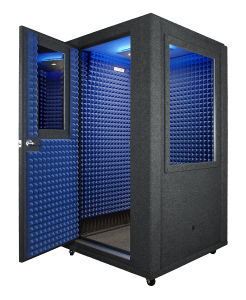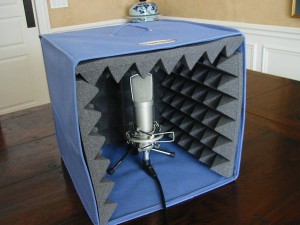I stumbled across this Media Relations article on writing for the ear. It was mostly written in the context of how to choose language to effectively convey your company’s message, but it works for general storytelling for a listening audience as well. Here are the big ideas:
1. Use short words
2. Use short sentences
3. Use everyday words
4. Use contractions
5. Speak them aloud
We discussed these rules in an STI course I ran on producing stories for the ear. Linked below is a sample from one of our Middle School teachers whose intent was to transport her students to different biomes through her words and sounds and their imagination.
Tag Archives: sound
Recording Booths
 There’s been a sudden interest in classroom recording booths. I’m so excited in this newfound interest in recording sounds. I bought this room-sized one for my computer lab a few years back. Thank you PTA! It has been wonderful. And we certainly recorded a lot of stories in there such as this one from Eve, then a 4th grader.
There’s been a sudden interest in classroom recording booths. I’m so excited in this newfound interest in recording sounds. I bought this room-sized one for my computer lab a few years back. Thank you PTA! It has been wonderful. And we certainly recorded a lot of stories in there such as this one from Eve, then a 4th grader.
But let’s face it. This large booth takes up a lot of space, when all we really need is a way to  reduce the ambient sounds that surround the mic. Thanks to the DIY spirit crossing the nation, there are now many solutions for small, lightweight portable sound booths. Here’s one that I’ve been wanting to make for a while, but the DIY spirit doesn’t often sweep me off my feet. Basically it’s a canvas storage cube, filled with sound dampening baffle. It’s about $20-25 worth of materials. I actually have all the material I need (once I dump my wife’s craft supplies from the canvas storage cube in the basement).
reduce the ambient sounds that surround the mic. Thanks to the DIY spirit crossing the nation, there are now many solutions for small, lightweight portable sound booths. Here’s one that I’ve been wanting to make for a while, but the DIY spirit doesn’t often sweep me off my feet. Basically it’s a canvas storage cube, filled with sound dampening baffle. It’s about $20-25 worth of materials. I actually have all the material I need (once I dump my wife’s craft supplies from the canvas storage cube in the basement).
I can place an iPad, Chromebook, and maybe even a Macbook into this box. But I’ll most likely place a USB mic inside the box, as shown in the picture above, and connect it to a Macbook on which I’ll record with either Vocaroo, Audacity, or Garageband.
With this box configuration, the microphone is still exposed to any room noise that comes from behind the person speaking into it. So it might be best to place the box so the back of the person speaking is against a wall. And even then I might consider putting additional foam baffle on the wall.
